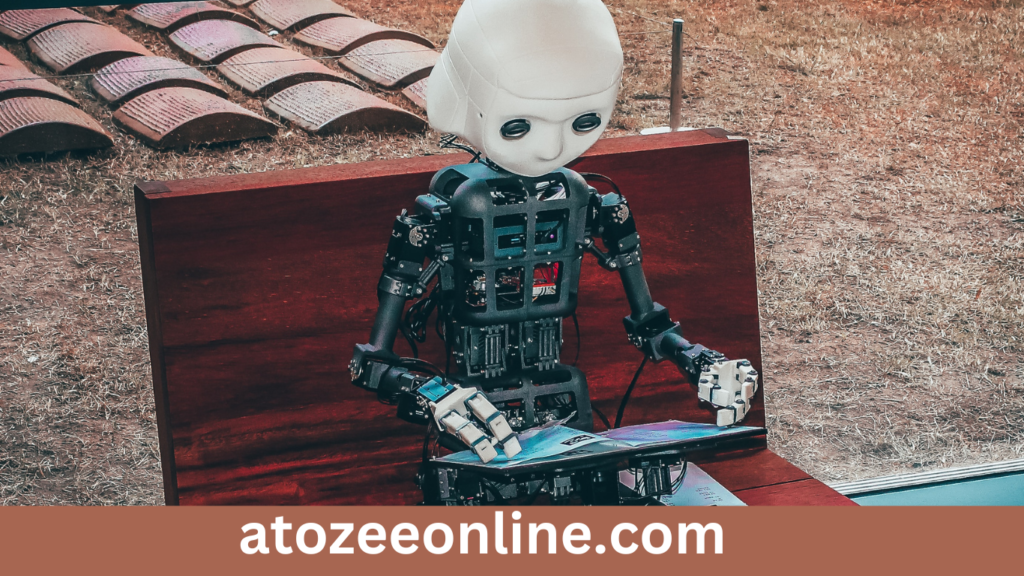Blogs
INCLUSIVE TECHNOLOGY

INCLUSIVE TECHNOLOGY
Inclusive Technology provides inclusive solutions to support and enable all abilities to access mainstream technology products.
Introduction:
What is Inclusive Technology & Why Does it Matter?
- INCLUSIVE TECHNOLOGY is all around us, it has become an integral part of our day-to-day lives.
- It is used to improve productivity and efficiency and most importantly to empower individuals.
- But with technology evolving rapidly, it’s essential that diversity and inclusion keep pace to ensure everyone benefits from technological advances.
- Inclusive technology allows for equal access for all users regardless of their abilities or disabilities, this is why it matters now more than ever before.
- Inclusive technology goes beyond accessibility considerations; it takes into account the whole range of diverse characteristics such as race, gender, age, and ethnicity when designing products or services that can be used by everyone.
- This includes creating user interfaces that are easy to use for those with physical disabilities as well as those with mental health issues or other accessibility needs.
- It also considers how bias might be inadvertently built into algorithms; supporting data validation processes to reduce stereotypes in machine learning models; designing conversation AI systems such that they sound natural across a wide range of users; and much

How Accessible Technology Can Make Science & Research More Accurate & Reliable:
- In today’s world, advances in accessible technology have enabled us to acquire more accurate and reliable data in science and research.
- By implementing diversity and inclusion policies, organizations can ensure that everyone has equal access to the necessary tools and resources needed for high-quality research.
- Innovations such as cloud computing and artificial intelligence (AI) provide opportunities for inclusive data collection that would otherwise not be possible.
- Accessible technology can make a significant impact on improving the accuracy and reliability of science and research in many different ways.
Exploring the Role of Artificial Intelligence to Reduce Human Bias & Ensure Fairness:
- In recent years, artificial intelligence (AI) has become a powerful tool to help reduce human bias and promote fairness.
- In particular, AI has been used to make more ethical decisions and consider fairness in situations where humans may not be able to do so.
- By eliminating unconscious and conscious biases that could otherwise lead to unfair outcomes, AI can be instrumental in creating a fairer society.
- This paper will explore how AI can reduce human bias and ensure fair decision-making processes by analyzing the use cases of AI’s importance in the field.
- We’ll look at examples of how AI is being deployed for ethical decision-making and discuss ways in which it can help create equality concerning gender, race, socioeconomic background, etc.
- Through this examination, we can see how artificial intelligence is playing an increasingly important role in reducing human bias and ensuring fairness across society.

Innovative Ways AI Could Make Healthcare More Equitable Across Global Populations:
- As INCLUSIVE TECHNOLOGY advancements continue to shape and reshape the global healthcare landscape, Artificial Intelligence (AI) is now being leveraged to make healthcare more equitable across global populations.
- AI-driven initiatives can help pave the way to providing better access and improved outcomes for many of the world’s most vulnerable people.
- From predictive analytics, virtual care, early diagnosis of diseases, and AI-driven drug discovery, these innovative approaches are helping to bridge gaps in global health resources.
- By leveraging data-driven insights with precision and scale, AI and machine learning can help increase access to quality care as well as better health outcomes for all globally.
Empowering Disabled Community by Leveraging Innovative Technologies:
- It’s no secret that disabled people have been struggling to access modern technologies and services.
- But with the advancement in design accessibility practices, it has become possible to empower individuals with disabilities through the use of innovative technological solutions.
- From smart assistants like Alexa to digital tools and applications created specifically for disabled people, these technologies can help create new opportunities for those who are unable to fully participate in technology-based activities due to physical or cognitive impairments.
- By understanding the needs of this community and leveraging accessible design practices, companies can start creating better experiences that can potentially reduce or even eliminate existing barriers preventing disabled people from fully taking part in society.
The Different Categories & Types of Inclusive Technology:
- Inclusive technology refers to a variety of technologies that make the use of digital products more accessible to everyone regardless of their physical, cognitive, or social abilities.
- It also provides features and tools that help people with disabilities access and use digital products.
- These range from assistive hardware like wheelchairs, and speech recognition software, to accessibility software like text-to-speech programs or screen magnification capabilities.
- They also include adaptive technologies such as keyboard alternatives and various disability assistance tools like mouth sticks or eye-tracking remote controls.
- In short, inclusive technology offers a range of accessible tech solutions to help individuals with different kinds of abilities access and use digital products which were not conceivable even decades ago.
THANKS TO READ MY ARTICLE ON INCLUSIVE TECHNOLOGY
TO READ MORE ARTICLES SO CLICK HERE





